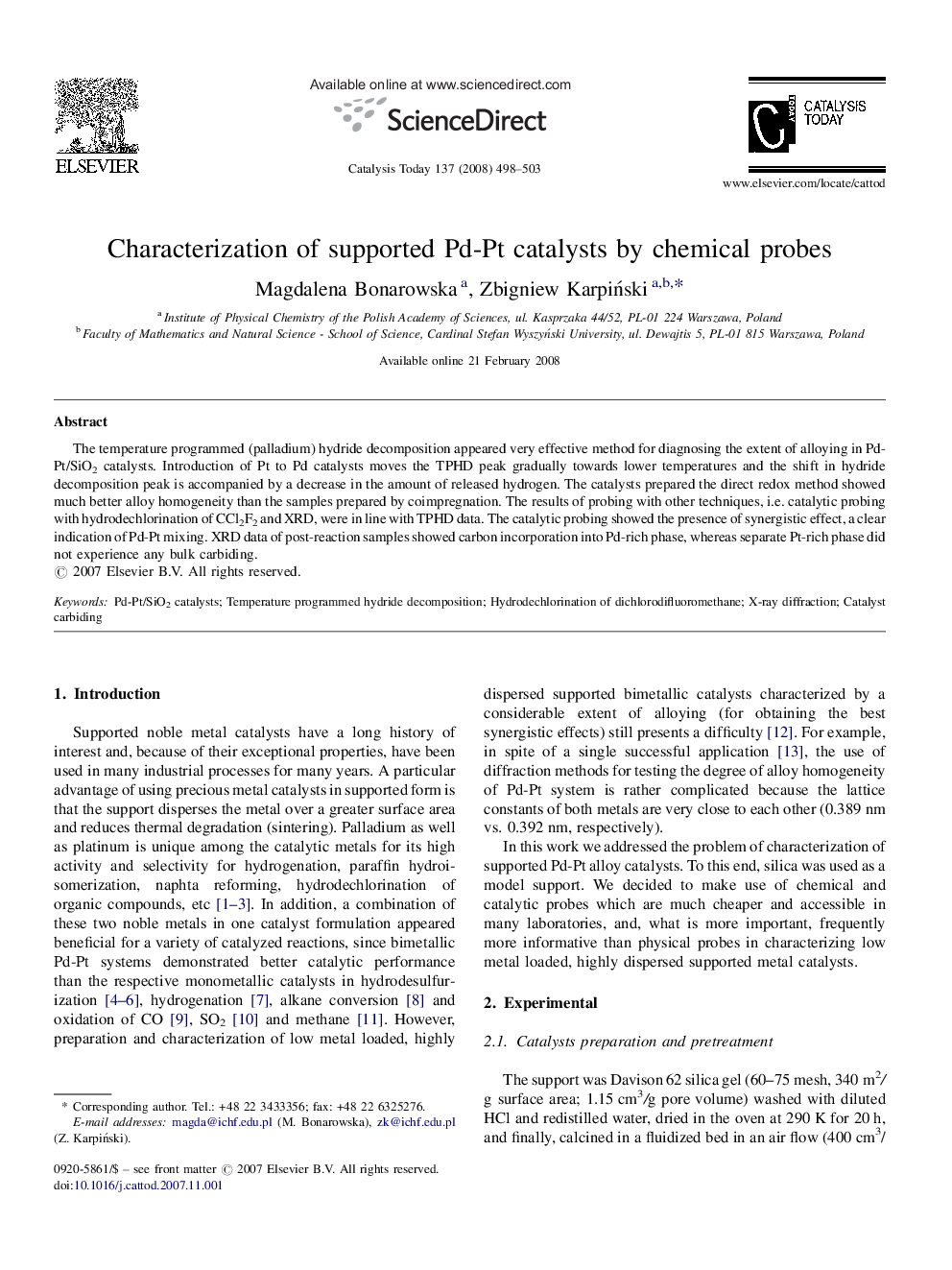| Article ID | Journal | Published Year | Pages | File Type |
|---|---|---|---|---|
| 57562 | Catalysis Today | 2008 | 6 Pages |
The temperature programmed (palladium) hydride decomposition appeared very effective method for diagnosing the extent of alloying in Pd-Pt/SiO2 catalysts. Introduction of Pt to Pd catalysts moves the TPHD peak gradually towards lower temperatures and the shift in hydride decomposition peak is accompanied by a decrease in the amount of released hydrogen. The catalysts prepared the direct redox method showed much better alloy homogeneity than the samples prepared by coimpregnation. The results of probing with other techniques, i.e. catalytic probing with hydrodechlorination of CCl2F2 and XRD, were in line with TPHD data. The catalytic probing showed the presence of synergistic effect, a clear indication of Pd-Pt mixing. XRD data of post-reaction samples showed carbon incorporation into Pd-rich phase, whereas separate Pt-rich phase did not experience any bulk carbiding.
